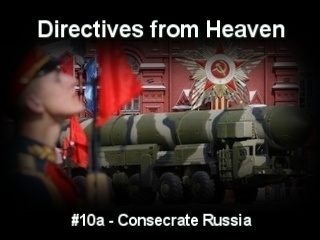A meditation on Lent by Abbot Dom
Guéranger, O.S.B.
The forty days' fast, which we call Lent[1], is the Church's preparation for
Easter, and was instituted at the very commencement of Christianity. Our
blessed Lord Himself sanctioned it by fasting forty days and forty nights in
the desert; and though He would not impose it on the world by an express
commandment (which, in that case, could not have been open to the power of
dispensation), yet He showed plainly enough, by His own example, that
fasting, which God had so frequently ordered in the old Law, was to be also
practiced by the children of the new.
The disciples of St. John the Baptist came, one day, to Jesus, and said to
Him: 'Why do we and the pharisees fast often, but Thy disciples do not
fast?' And Jesus said to them: 'Can the children of the Bridegroom mourn, as
long as the Bridegroom is with them? But the days will come, when the
Bridegroom shall be taken away from them, and then they shall fast.'[2]
Hence we find it mentioned, in the Acts of the Apostles, how the disciples
of our Lord, after the foundation of the Church, applied themselves to
fasting. In their Epistles, also, they recommended it to the faithful. Nor
could it be otherwise. Though the divine mysteries whereby our Saviour
wrought our redemption have been consummated, yet are we still sinners: and
where there is sin, there must be expiation.
The apostles, therefore, legislated for our weakness, by instituting, at the
very commencement of the Christian Church, that the solemnity of Easter
should be preceded by a universal fast; and it was only natural that they
should have made this period of penance to consist of forty days, seeing
that our divine Master had consecrated that number by His own fast. St.
Jerome[3], St. Leo the Great[4], St. Cyril of Alexandria[5], St. Isidore of
Seville[6], and others of the holy fathers, assure us that Lent was
instituted by the apostles, although, at the commencement, there was not any
uniform way of observing it.
We have already seen, in our 'Septuagesima,' that the Orientals begin their
Lent much earlier than the Latins, owing to their custom of never fasting on
Saturdays (or, in some places, even on Thursdays). They are, consequently,
obliged, in order to make up the forty days, to begin the lenten fast on the
Monday preceding our Sexagesima Sunday. Exceptions of this kind do but prove
the rule. We have also shown how the Latin Church--which, even so late as
the sixth century, kept only thirty-six fasting days during the six weeks of
Lent (for the Church has never allowed Sundays to be kept as days of
fast)-thought proper to add, later on, the last four days of Quinquagesima,
in order that her Lent might contain exactly forty days of fast.
The whole subject of Lent has been so often and so fully treated that we
shall abridge, as much as possible, the history we are now giving. The
nature of our work forbids us to do more than insert what is essential for
entering into the spirit of each season. God grant that we may succeed in
showing to the faithful the importance of the holy institution of Lent! Its
influence on the spiritual life, and on the very salvation, of each one
among us, can never be overrated.
Lent, then, is a time consecrated in an especial manner to penance; and this
penance is mainly practiced by fasting. Fasting is an abstinence, which man
voluntarily imposes upon himself as an expiation for sin, and which, during
Lent, is practiced in obedience to the general law of the Church. According
to the actual discipline of the western Church, the fast of Lent is not more
rigorous than that prescribed for the vigils of certain feasts, and for the
Ember Days; but it is kept up for forty successive days, with the single
interruption of the intervening Sundays.
We deem it unnecessary to show the importance and advantages of fasting. The
sacred Scriptures, both of the old and new Testament, are filled with the
praises of this holy practice. The traditions of every nation of the world
testify the universal veneration in which it has ever been held; for there
is not a people or a religion, how much soever it may have lost the purity
of primitive traditions, which is not impressed with this conviction--that
man may appease his God by subjecting his body to penance.
St. Basil, St. John Chrysostom, St. Jerome, and St. Gregory the Great, make
the remark, that the commandment put upon our first parents in the earthly
paradise was one of abstinence; and that it was by their not exercising this
virtue, that they brought every kind of evil upon themselves and upon us
their children. The life of privation, which the king of creation had
thenceforward to lead on the earth (for the earth was to yield him nothing
of its own natural growth, save thorns and thistles), was the clearest
possible exemplification of the law of penance imposed by the anger of God
on rebellious man. During the two thousand and more years, which preceded
the deluge, men had no other food than the fruits of the earth, and these
were obtained only by the toil of hard labour. But when God, as we have
already observed, mercifully shortened man's life that so he might have less
time and power for sin, He permitted him to eat the flesh of animals, as an
additional nourishment in that state of deteriorated strength. It was then,
also, that Noe, guided by a divine inspiration, extracted the juice of the
grape, which thus formed a second stay for human debility. Fasting, then, is
abstinence from such nourishments as these, which were permitted for the
support of bodily strength. And firstly, it consists in abstinence from
flesh-meat, because this food was given to man by God out of condescension
to his weakness, and not as one absolutely essential for the maintenance of
life. Its privation, greater or less according to the regulations of the
Church, is essential to the very notion of fasting. For many centuries eggs
and milk-meats were not allowed, because they come under the class of animal
food; even to this day they are forbidden in the eastern Churches. In the
early ages of Christianity, fasting included also abstinence from wine, as
we learn from St. Cyril of Jerusalem[7], St. Basil[8], St. John
Chrysostom[9], Theophilus of Alexandria[10], and others. In the west, this
custom soon fell into disuse. The eastern Christians kept it up much longer,
but even with them it has ceased to be considered as obligatory. Lastly,
fasting includes the depriving ourselves of some portion of our ordinary
food, inasmuch as it allows only one meal during the day. Though the
modifications introduced from age to age in the discipline of Lent are very
numerous, yet the points we have here mentioned belong to the very essence
of fasting, as is evident from the universal practice of the Church. It was
the custom with the Jews, in the old Law, not to take the one meal, allowed
on fasting days, till sunset. The Christian Church adopted the same custom.
It was scrupulously practiced, for many centuries, even in our western
countries. But about the ninth century some relaxation began to be
introduced in the Latin Church. Thus we have a capitularium of Theodulph,
bishop of Orleans, who lived at that period, protesting against the
practice, which some had, of taking their repast at the hour of None, that
is to say, about three o'clock in the afternoon[11]. The relaxation,
however, gradually spread; for, in the tenth century, we find the celebrated
Ratherius, bishop of Verona, acknowledging that the faithful had permission
to break their fast at the hour of None[12]. We meet with a sort of
reclamation made as late as the eleventh century, by a Council held at
Rouen, which forbids the faithful to take their repast before Vespers shall
have been begun in the church, at the end of None[13]; but this shows us
that the custom had already begun of anticipating the hour of Vespers, in
order that the faithful might take their meal earlier in the day. Up to
within a short period before this time, it had been the custom not to
celebrate Mass, on days of fasting, until the Office of None had been sung,
which was about three o'clock in the afternoon; and, also, not to sing
Vespers till sunset. When the discipline regarding fasting began to relax,
the Church still retained the order of her Offices, which had been handed
down from the earliest times. The only change she made was to anticipate the
hour for Vespers; and this entailed the celebration of Mass and None much
earlier in the day; so early, indeed, that, when custom had so prevailed as
to authorize the faithful taking their repast at midday, all the Offices,
even the Vespers, were over before that hour.
In the twelfth century, the custom of breaking one's fast at the hour of
None everywhere prevailed, as we learn from Hugh of Saint-Victor[14]; and in
the thirteenth-century, it was sanctioned by the teaching of the Schoolmen.
Alexander Hales declares most expressly that such a custom was lawful[15];
and St. Thomas of Aquin is equally decided in the same opinion[16].
But even the fast till None i.e., three o'clock- was found too severe; and a
still further relaxation was considered to be necessary. At the close of the
thirteenth century, we have the celebrated Franciscan, Richard of Middleton,
teaching that those who break their fast at the hour of Sext--i.e.,
midday-are not to be considered as transgressing the precept of the Church;
and the reason he gives is this: that the custom of doing so had already
prevailed in many places, and that fasting does not consist so much in the
lateness of the hour at which the faithful take their refreshment, as in
their taking but one meal during the twenty-four hours[17].
The fourteenth century gave weight, both by universal custom and theological
authority, to the opinion held by Richard of Middleton. It will, perhaps;
suffice if we quote the learned Dominican, Durandus, bishop of Meaux, who
says that there can be no doubt as to the lawfulness of taking one's repast
at midday; and he adds that such was then the custom observed by the Pope,
and Cardinals, and even the religious Orders[18]. We cannot, therefore, be
surprised at finding this opinion maintained, in the fifteenth century, by
such grave authors as St. Antoninus, Cardinal Cajetan, and others. Alexander
Hales and St. Thomas sought to prevent the relaxation going beyond the hour
of None; but their zeal was disappointed, and the present discipline was
established, we might almost say, during their lifetime.
But whilst this relaxation of taking the repast so early in the day as
twelve o'clock rendered fasting less difficult in one way, it made it more
severe in another. The body grew exhausted by the labours of the long second
half of the twenty-four hours; and the meal, that formerly closed the day,
and satisfied the cravings of fatigue, had been already taken. It was found
necessary to grant some refreshment for the evening, and it was called a
collation. The word was taken from the Benedictine rule, which, for long
centuries before this change in the lenten observance, had allowed a
monastic collation. St. Benedict's rule prescribed a great many fasts, over
and above the ecclesiastical fast of Lent; but it made this great
distinction between the two: that whilst Lent obliged the monks, as well as
the rest of the faithful, to abstain from food till sunset, these monastic
fasts allowed the repast to be taken at the hour of None. But, as the monks
had heavy manual labour during the summer and autumn months (which was the
very time when these fasts till None occurred several days of each week,
and, indeed, every day from September 14), the abbot was allowed by the rule
to grant his religious permission to take a small measure of wine before
Compline, as a refreshment after the fatigues of the afternoon. It was taken
by all at the same time, during the evening reading, which was called
conference (in Latin, collatio) because it was mostly
taken from the celebrated 'Conferences' (Collationes) of Cassian.
Hence this evening monastic refreshment took the name of collation.
We find the Assembly, or Chapter of Aix-la-Chapelle, held in 817, extending
this indulgence even to the lenten fast, on account of the great fatigue
entailed by the offices, which the monks had to celebrate during this holy
season. But experience showed that, unless something solid were allowed to
be taken together with the wine, the evening collation would be an injury to
the health of many of the religious; accordingly, towards the close of the
fourteenth or the beginning of the fifteenth century, the usage was
introduced of taking a morsel of bread with the collation-beverage.
As a matter of course, these mitigations of the ancient severity of fasting
soon found their way from the cloister into the world. The custom of taking
something to drink on fasting days, out of the time of the repast, was
gradually established; and even so early as the thirteenth century, we have
St. Thomas of Aquin discussing the question, whether or not drink is to be
considered as a breaking of the precept of fasting[19]. He answers in the
negative; and yet he does not allow that anything solid may be taken with
the drink. But when it had become the universal practice (as it did in the
latter part of the thirteenth century, and still more fixedly during the
whole of the fourteenth) that the one meal on fasting days was taken at
midday, a mere beverage was found insufficient to give support, and bread,
herbs, fruits, etc., were added. Such wee the practice, both in the world
and in the cloister. It was, however, clearly understood by all, that these
eatables were not to be taken in such quantity as to turn the collation into
a second meal.
Thus did the decay of piety, and the general deterioration of bodily
strength among the people of the western nations,, infringe on the primitive
observance of fasting. To make our history of these humiliating changes
anything like complete, we must mention one more relaxation. For several
centuries, abstinence from flesh--meat included likewise the prohibition of
all animal food, with the single exception of fish, which, on account of Its
cold nature, as also for several mystical reasons, founded on the sacred
Scriptures, was always permitted to be taken by those who fasted. Every sort
of milk-meat was forbidden.
Dating from the ninth century, the custom of eating milk-meats during Lent
began to be prevalent in western Europe, more especially in Germany and the
northern countries. The Council of Kedlimberg, held in the eleventh century,
made an effort to put a atop to the practice as an abuse; but without
effect[20]. These Churches maintained that they were in the right, and
defended their custom by the dispensations (though, in reality, only
temporary ones) granted them by several sovereign Pontiffs: the dispute
ended by their being left peaceably to enjoy what they claimed. The Churches
of France restated this innovation up to the sixteenth century; but in the
seventeenth they too yielded, and milk-meats were taken during Lent,
throughout the whole kingdom. As some reparation for this breach of ancient
discipline, the city of Paris instituted a solemn rite, whereby she wished
to signify her regret at being obliged to such a relaxation. On
Quinquagesima Sunday, all the different parishes went in procession to the
church of Notre Dame. The Dominicans, Franciscans, Carmelites, and
Augustinians, took part in the procession. The metropolitan Chapter, and the
four parishes that were subject to it, held, on the same day, a Station in
the courtyard of the palace, and sang an anthem before the relic of the true
cross, which was exposed in the Sainte Chapelle. These
pious usages, which were intended to remind the people of the difference
between the past and the present observance of Lent, continued to be
practiced till the revolution.
But this grant for the eating of milk-meats during Lent did not include
eggs. Here the ancient discipline was maintained, at least this far, that
eggs were not allowed, save by an Indult, which had to be renewed each year.
Invariably do we find the Church seeking, out of anxiety for the spiritual
advantage of her children, to maintain all she can of those penitential
observances, whereby they may satisfy divine justice. It was with this
intention that Pope Benedict XIV, alarmed at the excessive facility
wherewith dispensations were then obtained, renewed, by a solemn Constitution dated
June 10, 1745, the prohibition of eating fish and meat, at the same meal, on
fasting days.
The same Pope, whose spirit of moderation has never been called in question,
had no sooner ascended the papal throne, than he addressed an encyclical
letter to the bishops of the Catholic world, expressing his heartfelt grief
at seeing the great relaxation that was introduced among the faithful by
indiscreet and unnecessary dispensations. The letter is dated May 30, 1741.
We extract from it the following passage: 'The observance of Lent is the
very badge of the Christian warfare. By it we prove ourselves not to be
enemies of the cross of Christ. By it we avert the scourges of divine
justice. By it we gain strength against the princes of darkness, for it
shields us with heavenly help. Should mankind grow remiss in their
observance of Lent, it would be a detriment to God's glory, a disgrace to
the Catholic religion, and a danger to Christian souls. Neither can it be
doubted that such negligence would become the source of misery to the world,
of public calamity, and of private woe'[21].
More than a hundred years have elapsed since this solemn warning of the
Vicar of (Christ was given to the world; and during that time, the
relaxation he inveighed against has gone on gradually increasing. How few
Christians do we meet who are strict observers of Lent, even in its present
mild form![22]
And must there not result from this ever-growing spirit of immortification,
a general effeminacy of character, which will lead, at last, to frightful
social disorders? The sad predictions of Pope Benedict XIV are but too truly
verified. Those nations, among whose people the spirit and practice of
penance are extinct, are heaping against themselves the wrath of God, and
provoking His justice to destroy them by one or other of these
scourges--civil discord, or conquest. In our own country there is an
inconsistency, which must strike every thinking mind: the observance of the
Lord's day, on the one side; the national inobservance of days of penance
and fasting, on the other. The first is admirable, and, if we except
puritanical extravagances, bespeaks a deep-rooted sense of religion; but the
second is one of the worst presages for the future. The word of God is
unmistakable: unless we do penance, we shall perish[23]. But if our
ease-loving and sensual generation were to return, like the Ninivites, to
the long-neglected way of penance and expiation, who knows but that the arm
of God, which is already raised to strike us, may give us blessing and not
chastisement?
Let us resume our history, and seek our edification in studying the fervour
wherewith the Christians of former times wed to observe Lent. We will first
offer to our readers a few instances of the manner in which dispensations
were given.
In the thirteenth century, the archbishop of Braga applied to the reigning
Pontiff, Innocent III., asking him what compensation he ought to require of
his people, who, in consequence of a dearth of the ordinary articles of
food, had been necessitated to eat meat during the Lent. He at the same time
consulted the Pontiff as to how he was to act in the case of the sick, who
asked for a dispensation from abstinence. The answer given by Innocent,
which was inserted in the Canon Law[24], is, as we might expect, full of
considerateness and charity; but we learn from this fact that such was then
the respect for the law of Lent, that it was considered necessary to apply
to the sovereign Pontiff when dispensations were sought for. We find many
such instances in the history of the Church.
Wenceslaus, king of Bohemia, being seized with a malady which rendered it
dangerous to his health to take Lenten diet, applied, in the year 1297, to
Pope Boniface VIII., for leave to eat meat. The Pontiff commissioned two
Cistercian abbots to inquire into the real state of the prince's health;
they were to grant the dispensation sought for, if they found it necessary,
but on the following conditions: that the king had not bound himself by a
vow, for life, to fast during Lent; that the Fridays, the Saturdays, and the
vigil of St. Mathias, were to be excluded from the dispensation; and,
lastly, that the king was not to take his meal in presence of others, and
was to observe moderation in what he took[25].
In the fourteenth century we meet with two briefs of dispensation, granted
by Clement VI., in 1351, to John, king of France, and to his queen consort.
In the first, the Pope, taking into consideration that during the wars in
which the king is engaged he frequently finds himself in places where fish
can with difficulty be procured, grants to the confessor of the king the
power of allowing, both to his Majesty and to his suite, the use of meat on
days of abstinence, excepting, however, the whole of Lent, all Fridays of
the year, and certain vigils; provided, moreover, that neither he, nor those
who accompany him, are under a vow of perpetual abstinence[26]. In the
second brief the same Pope, replying to the petition made him by the king
for a dispensation from fasting, again commissions his Majesty's present and
future confessors, to dispense both the king and his queen, after having
consulted with their physicians[27].
A few years later-that is, in 1376--Pope Gregory XI. sent a brief in favour
of Charles V., king of France, and of Jane, his queen. In this brief, he
delegates to their confessor the power of allowing them the use of eggs and
milk-meats during Lent, should their physician think they stand in need of
such dispensation; but he tells both physicians and confessor that he puts
it upon their consciences, and that they will have to answer before God for
their decision. The same permission is granted also to their servants and
cooks, but only as far as it is needed for tasting the food to be served to
their Majesties.
The fifteenth century, also, furnishes us with instances of applications to
the holy See for lenten dispensations. We will cite the brief addressed by
Xystus IV, in 1483, to James III, king of Scotland, in which he grants him
permission to eat meat on days of abstinence, provided his confessor
considers the dispensation needed[28]. In the following century, we have
Julius II. granting a like dispensation to John, king of Denmark, and to his
queen Christina[29]; and, a few years later, Clement VII. giving one to the
emperor Charles V[30], and again, to Henry II of Navarre, and to his queen
Margaret[31].
Thus were princes themselves treated, three centuries ago, when they sought
for a dispensation from the sacred law of Lent. What are we to think of the
present indifference wherewith it is kept? What comparison can be made
between the Christians of former times, who, deeply impressed with the fear
of God's judgments and with the spirit of penance, cheerfully went through
these forty days of mortification, and those of our own days, when love of
pleasure and self-indulgence are for ever lessening man's horror for sin?
Where there is little or no fear of having to penance ourselves for sin,
there is so much the less restraint to keep us from committing it.
Where is now that simple and innocent joy at Easter, which our forefathers
used to show, when, after their severe fast of Lent, they partook of
substantial and savoury food? The peace, which long and sharp mortification
ever brings to the conscience, gave them the capability, not to say the
right, of being light-hearted as they returned to the comforts of life,
which they had denied themselves in order to spend forty days in penance,
recollection, and retirement from the world. This leads us to mention some
further details, which will assist the Catholic reader to understand what
Lent was in the ages of faith.
It was a season during which, not only all amusements and theatrical
entertainments were forbidden by the civil authority[32], but even the law
courts were closed; and this in order to secure that peace and calm of
heart, which is so indispensable for the soul's self-examination, and
reconciliation with her offended Maker. As early as the year 380, Gratian
and Theodosius enacted that judges should suspend all law-suits and
proceedings, during the forty days preceding Easter[33]. The Theodosian Code
contains several regulations of this nature; and we find Councils, held in
the ninth century, urging the kings of that period to enforce the one we
have mentioned, seeing that it had been sanctioned by the canons, and
approved of by the fathers of the Church[34]. These admirable Christian
traditions have long since fallen into disuse in the countries of Europe;
but they are still kept among the Turks, who, during the days of their
Ramadan, forbid all law proceedings. What a humiliation for us Christians!
Hunting, too, was for many ages considered as forbidden during Lent: the
spirit of the holy season was too sacred to admit such exciting and noisy
sport. Pope St. Nicholas I., in the ninth century, forbade it the
Bulgarians[35], who had been recently converted to the Christian faith. Even
so late as the thirteenth century, we find St. Raymund of Pennafort teaching
that those who, during Lent, take part in the chase, if it be accompanied by
certain circumstances which he specifies, cannot be excused from sin[36].
This prohibition has long since been a dead letter; but St. Charles
Borromeo, in one of his Synods, reestablished it in his province of Milan.
But we cannot be surprised that hunting should be forbidden during Lent,
when we remember that, in those Christian times, war itself, which is
sometimes so necessary for the welfare of a nation, was suspended during
this holy season. In the fourth century, we have the emperor Constantine the
Great enacting that no military exercises should be allowed on Sundays and
Fridays, out of respect to our Lord Jesus Christ, who suffered and rose
again on these two days, as also in order not to disturb the peace and
repose needed for the due celebration of such sublime mysteries[37]. The
discipline of the Latin Church, in the ninth century, enforced everywhere
the suspension of war during the whole of Lent, except in cases of
necessity[38]. The instructions of Pope St. Nicholas I. to the Bulgarians
recommend the same observance[39]; and we learn, from a letter of St.
Gregory VII to Desiderius, abbot of Monte Cassino, that it was kept up in
the eleventh century[40]. We have an instance of its being practiced in our
own country, in the twelfth century, when, as William of Malmesbury relates,
the empress Matilda, Countess of Anjou, and daughter of king Henry, was
contesting the right of succession to the throne against Stephen, count of
Boulogne. The two armies were in sight of each other; but an armistice was
demanded and observed, for it was the Lent of 1143[41].
Our readers have heard, no doubt, of the admirable institution called 'God's
truce,' whereby the Church in the eleventh century succeeded in preventing
much bloodshed. This law, which forbade the carrying of arms from Wednesday
evening till Monday morning throughout the year, was sanctioned by the
authority of Popes and Councils, and enforced by all Christian princes. It
was an extension of the lenten discipline of the suspension of war. Our
saintly king Edward the Confessor carried its influence still further by
passing a law (which was confirmed by his successor, William the Conqueror),
that God's truce should be observed without cessation from the beginning of
Advent to the octave of Easter; from the Ascension to the Whitsuntide
octave; on all the Ember days; on the vigils of all feasts; and lastly,
every week, from None on Wednesday till Monday morning, which had already
been prescribed[42].
In the Council of Clermont, held in 1095, Pope Urban II., after drawing up
the regulations for the Crusades, used his authority in extending God's
truce, as it was then observed during Lent. His decree, which was renewed in
the Council held the following year at Rouen, was to this effect: that all
war proceedings should be suspended from Ash Wednesday to the Monday after
the octave of Pentecost, and on all vigils and feasts of the blessed Virgin
and of the apostles, over and above what was already regulated for each
week, that is, from Wednesday evening to Monday morning[43].
Thus did the world testify its respect for the holy observances of Lent, and
borrow some of its wisest institutions from the seasons and feasts of the
liturgical year. The influence of this forty days' penance was great, too,
on each individual. It renewed man's energies, gave him fresh vigour in
battling with his animal instincts, and, by the restraint it put upon
sensuality, ennobled the soul. There was restraint everywhere; and the
present discipline of the Church, which forbids the solemnization of
marriage during Lent, reminds Christians of that holy continency, which, for
many ages, was observed during the whole forty days as a precept, and of
which the most sacred of the liturgical books, the missal, still retains the
recommendation[44].
It is with reluctance that we close our history of Lent, and leave untouched
so many other interesting details. For instance, what treasures we could
have laid open to our readers from the lenten usages of the eastern
Churches, which have retained so much of the primitive discipline! We
cannot, however, resist devoting our last page to the following particulars.
We mentioned, in the preceding volume, that the Sunday we call Septuagesima,
is called, by the Greeks, Prophone, because the opening
of Lent is proclaimed on that day. The Monday following it is counted as the
first day of the next week, which is Apocreos, the name
they give to the Sunday which closes that week, and which is our Sexagesima
Sunday. The Greek Church begins abstinence from flesh-meat with this week.
Then on the morrow, Monday, commences the week called Tyrophagos,
which ends with the Sunday of that name, corresponding to our Quinquagesima.
White-meats are allowed during that week. Finally, the morrow is the first
day of the first week of Lent, and the fast begins with all its severity, on
that Monday, whilst, in the Latin Church, it is deferred to the Wednesday.
During the whole of the Lent preceding Easter, milk-meats, eggs, and even
fish, are forbidden. The only food permitted to be eaten with bread, is
vegetables, honey, and, for those who live near the sea, shellfish. For many
centuries wine might not be taken, but it is now permitted, and on the
Annunciation and Palm Sunday a dispensation is granted for eating fish.
Besides the Lent preparatory to the feast of Easter, the Greeks keep three
others in the year: that which is called 'of the apostles,' which lasts from
the octave of Pentecost to the feast of Saints Peter and Paul; that 'of the
Virgin Mary,' which begins on the first of August, and ends with the vigil
of the Assumption, and lastly, the Lent of preparation for Christmas, which
consists of forty days. The fasting and abstinence of these three Lents are
not quite so severe as those observed during the great Lent. The other
Christian nations of the east also observe several Lents, and more rigidly
than the Greeks, but all these details would lead us too far. We therefore
pass on to the mysteries which are included in this holy season.
REFERENCES
[1] In most languages, the name given to this fast expresses
the number of the days, forty. But our word Lent signifies
the Spring-fast for Lenten-tide,
In the ancient English Saxon language, was the season of Spring. [Tr.]
[2] St. Matt. ix. 14.15;
[3] Epist. xxvii,. ad
Marcellam.
[4] Serm. ii, v, ix, de
Quadragesima
[5] Homil. Paschal.
[6] De Ecclesiast. Officiis, lib. vi. cap.
xix.
[7] Catech. iv.
[8] Homily i. De
Jejunio.9 Homily iv. Ad populum Antioch.
[10] Litt.
Pasch. iii.11 Capitul. xxxix. Labb. Conc. tom.
viii.12 Sermon I, De Quadrages. D'Achery. Spicilegium,
tom. ii.13 Orderic. Vital. Histor. lib..
iv.
[14] In regul. S. Augustini, cap. iii.
[15] Summa,
Part iv. Quaest. 28, art. 2.
[16] 2a 2ae Q. 147, a. 7
[17] In iv. Dist. xv.,
art. 3, Quaest. 8.
[18] In iv. Dist.
xv., Quaest. 9, art. 7.
[19] In iv.
Quaest. cxlvii. art. 6.
[20] Labbe, Concil. tom. x.
[21] Constitution: Non ambigimus.
[22] The
Regulations of the Church with regard to Fasting and Abstinence have been
revised in accordance with present circumstances and conditions. The Indult
granted each Lent in former years is no longer necessary, and all are
required to observe the common law of the Church. By the new code of Canon
Law a distinction is made between fasting and abstinence. All the week days
of Lent, the Ember Days and some vigils are days of fasting, but meat is
allowed at the full meal except on Wednesdays and Fridays and the Ember Days
in Lent.
[23] St. Luke xiii. 3.
[24] Decretal., lib. iii., cap. Concilium;
de Jejunio. Tit. xlvi
[25] Raynaldi Ad. ann.
1297.
[26] D'Achery, Spicilegium, tom. iv.
[27] Ibid.
[28] Raynaldi, Ad. ann. 1484.
[29] Ibid.
Ad. ann. 1505.
[30] Ibid. Ad. ann. 1524.
[31] Ibid.
Ad. ann. 1533.
[32] It was the Emperor Justinian who passed this law,
as we learn from Photius, Nomocanon. tit. vii. cap. i.
[33] Cod. Theodos. lib. is. tit. xxxv. leg. 4.
[34]
Labbe, Concil. tom. vii. and ix.
[35] Ad
consultat. Bulgarorum, Labbe, Concil. tom. viii.
[36] Summ.
cas. Poenit., lib. iii. tit. xxix. De laps. et disp.
# 1.
[37] Euseb. Constant. vita, lib. iv. cap. xviii.
et xix.
[38] Labbe. Concil. tom. vii.
[39] Ibid.
tom. viii.
[40] Ibid. tom. x.
[41] Wilhelm.
Malmesbur. Hist. nov. no. 30.
[42] Labbe, Concil.
tom. ix.
[43] Orderic. Vital. Hist. Eccles. lib. ix.
[44] Missale Romanum. Missa pro sponso et sponsa.
(Taken from Volume V Lent of "The Liturgical Year" by Abbot
Gueranger O.S.B. published by Marian House, Powers Lake, ND 58773.)
"As I look upon your world, I live anew My Passion and My suffering. I look
upon your world and I am forced to say: Has My Sacrifice been in vain? Always
in the past the Father has sent upon your world a just punishment. The Father
has created and the Father will take away! From your world, many souls will be
removed!" - Jesus, March 29, 1975
Lenten readings


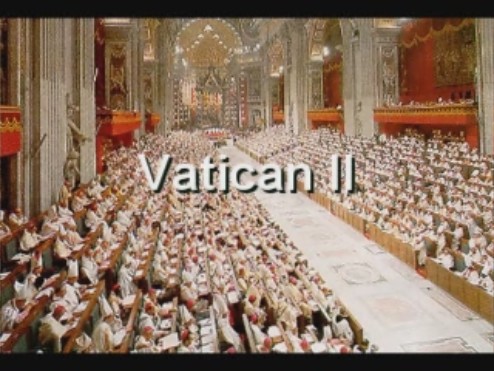 Vatican
II
Vatican
II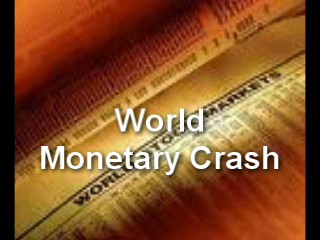 World
Monetary Crash
World
Monetary Crash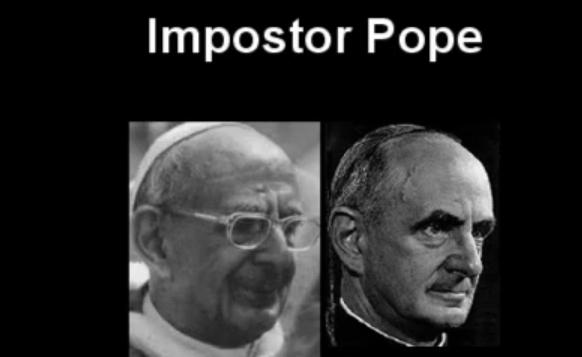 Deception
of the Century
Deception
of the Century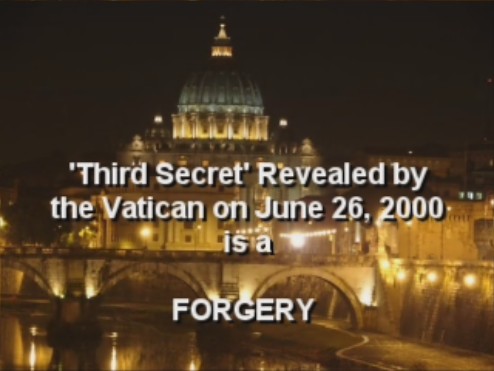 Third
Secret Fabrication
Third
Secret Fabrication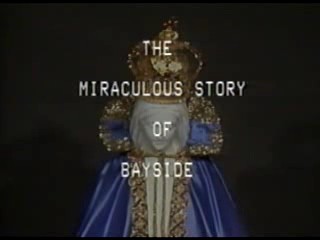 The
Miraculous Story of Bayside
The
Miraculous Story of Bayside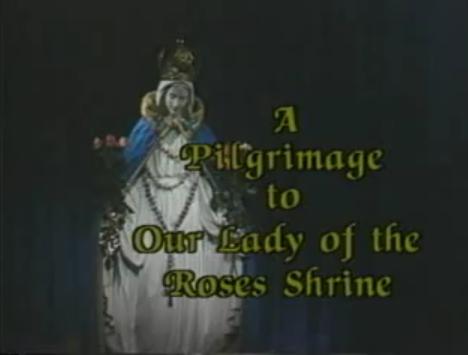 A
Pilgrimage to Our Lady of the Roses Shrine
A
Pilgrimage to Our Lady of the Roses Shrine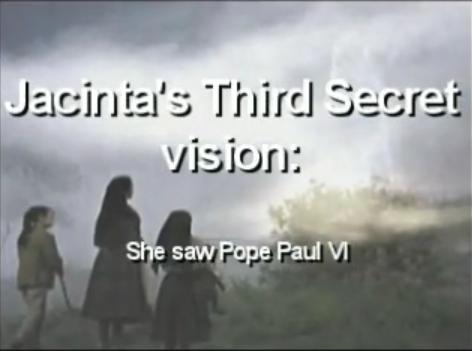 Jacinta's
Third Secret vision: She saw Pope Paul VI
Jacinta's
Third Secret vision: She saw Pope Paul VI